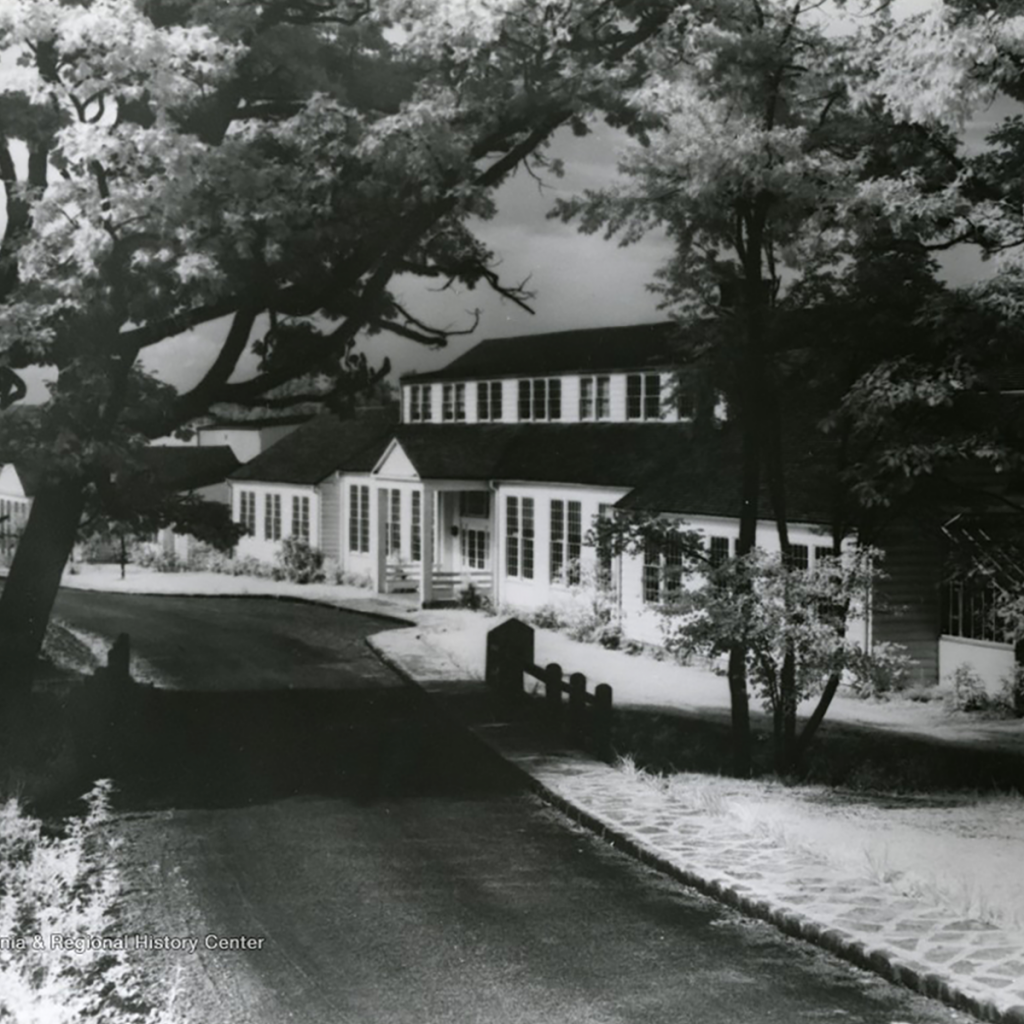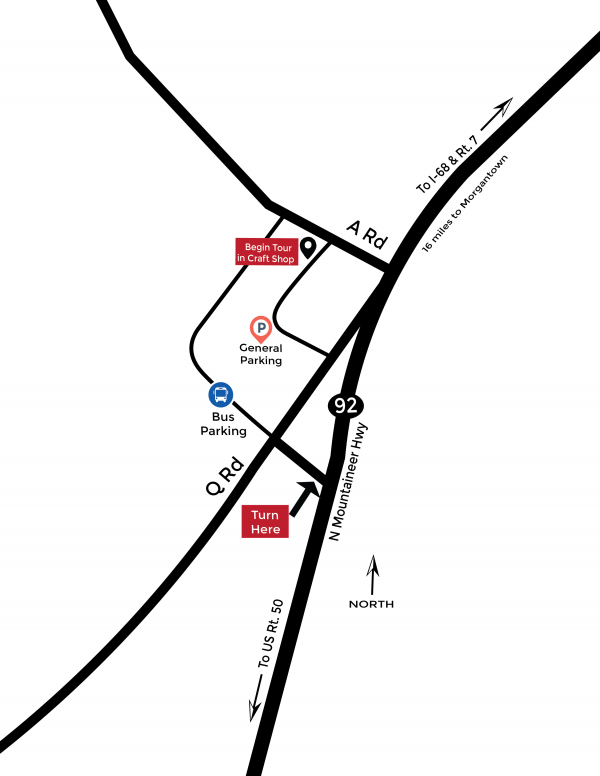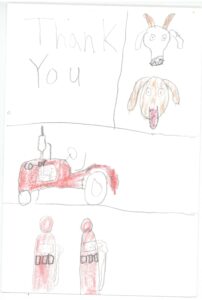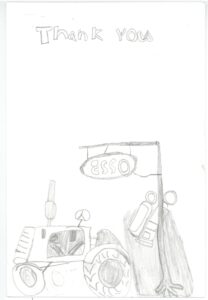School Tours of Arthurdale

We love to welcome school groups to visit Arthurdale! If you would like to bring your class to our museum, please contact us to reserve a date and time.
At our New Deal Museum, students can learn about life during the Great Depression and how the New Deal and the creation of New Deal Homestead Communities like Arthurdale impacted the lives of West Virginians. We recommend that you allow up to 2 hours for your tour.
What Visiting Students Have to Say:
"I enjoyed it so much when we got to go through the old houses and got to see all of the cool artifacts. I learned that I am related to someone in Arthurdale! I think that is really cool. Thank you for letting me go to Arthurdale."
"I learned that Mrs. Roosevelt visited Arthurdale somewhat a lot. I also learned that their houses had a lot of high quality stuff like running water, electricity, and many more high quality stuff. My favorite thing was the house. It was really fun!"
"Thank you for taking your time to give us a tour of the Arthurdale Heritage. My favorite part was the museum because it gave me an idea of what life was like back then. Two things I learned were blacksmithing and about some things they used compared to some things we have now. I just want to give you a big appreciation from me."
"Thank you for taking the time out of your day to teach us about the history of Arthurdale Heritage. One thing I liked is the blacksmithing...One thing I learned is they would only let white people live in Arthurdale back then. Another thing I learned about Arthurdale is they had power back then."
"All of the 5th graders loved the trip. Thank you for all you did. We all loved the buildings and the goats/dogs. We appreciate all you did!! 🙂 I learned lots of things but the most interesting was how hot the forge's anvil worked. It was so cool."
Frequenty Asked Questions
What’s the cost of admission?
We suggest a $5 donation per individual. Teachers are free; accompanying parents are $5 each. If someone in your party is a museum member, their admission is free. Don’t forget to bring a few extra dollars for the gift shop!
When is payment due for the tour?
Payment is due upon arrival.
When is the museum open?
The New Deal Museum is open year-round Monday-Friday from 10am - 3pm. From May-October, we are also open from 10am - 3pm on Saturdays. The museum can accommodate private group tours after hours or on off days with advanced notice, pending the availability of our staff and volunteers. For by-appointment tours, we ask that you consider making an additional donation to the $5/person suggested donation, in order to cover staff time for opening the museum.
How do I book a group tour?
Please use the form on this page to schedule a tour.
How far in advance should I book a tour?
We recommend booking tour groups larger than 10 people at least one week in advance.
How many people can attend a guided tour?
We recommend no more than 25 people for the guided tour. If your group is larger than 10 people, we may split this into multiple tours.
How long does it take to tour the museum?
A guided tour typically lasts around 1.5 hours. After the tour, feel free to take your time exploring the craft shop. We recommend that you allow 2 hours for the whole visit.
What else is there to do near Arthurdale?
Check here for ideas on how to expand your trip!
Can we take photos during our visit?
Yes! Non-flash photography is permitted in the museum.
We can’t physically come to the museum. Do you offer distance learning services?
Yes! Please take a look at our lesson plans page for learning activities. You may also contact us at elizabeth.satterfield@arthurdaleheritage.org.
Assorted Logistical Information
We have three gender-neutral bathrooms available, so up to three students can use the bathroom at once. If you choose to eat lunch at Arthurdale, you can eat on the lawn, or (if planned in advance), we can set up tables in Center Hall. We will store coats, lunch boxes, and bags in Center Hall while the tour is in progress.
Parking
Visitors in cars may park directly in front of our main building, Center Hall.
Buses should turn onto Q Rd. directly across from the Arthurdale Post Office on Rt. 92. From there, they can either drive straight across Q onto the gravel road straight ahead or turn left onto Q briefly before backing onto the gravel road. Either way, the bus should end up on the gravel road, parked directly in front of a set of garage bays.
Standard Tour Routine
We begin with a welcome in Center Hall where students will leave all their bags. A guide will then lead the group through our museum, forge, and historic homestead house where students will also have an opportunity to see our goats. Following the tour, you are welcome to eat lunch on our campus and/or visit the craft shop.
Coming Soon: A pre-field trip guide to assist with lesson planning for your students!

Learning Outcomes
State Standard Learning Outcomes by Grade
To help teachers in planning and gaining approval for field trips, we have highlighted below the state standards that our tour covers for each grade level where relevant standards were listed. In particular, students will learn about life in the Great Depression and how the New Deal programs impacted the lives of West Virginians. We especially encourage 4th and 8th grade groups to visit as part of their West Virginia heritage studies.
Kindergarten*:
- Investigate the past and explore differences in other people, times and cultures through stories of people, heroes, pictures, songs, holidays, customs, traditions, or legends. (History SS.K.16)
- Explore time, places, people, and events in relationship to student’s own life (History SS.K.17)
- Recognize local community names (WV History SS.K.21)
- Compare and contrast past and present lifestyles of West Virginians (WV History SS.K.22)
1st Grade*:
- Utilize primary source documents and oral accounts to investigate ways communities change throughout history (History SS.1.18)
- Explore the history of the community and give examples of locally significant sites and people (History SS.1.20)
- Locate students’ hometown and county on a WV map (WV History SS.1.24)
- Describe the cultural life of West Virginia as reflected in games, toys and various art forms (WV History SS.1.25)
2nd Grade*:
- Identify cultural contributions and differences made by people from the various regions of the United States using literature, documents and oral accounts (History SS.2.15)
- Explore the impact historic figures have had upon our society (History SS.2.16)
- Examine the cultural life of West Virginians through storytelling and various art forms (e.g. songs, instruments, photographs, etc.) (WV History SS.2.20)
- Compare and contrast past and present lifestyles of West Virginians (WV History SS.2.21)
4th Grade:
- Analyze the impact of West Virginia’s geography on transportation, settlement, jobs, clothing, food, shelter, services and interaction with others outside the state (WV History SS.4.17)
- Compare and contrast West Virginia’s population, products, resources and transportation from the 18th century through modern day (WV History SS.4.18)
- Pose, research and answer student-generated questions related to West Virginia (e.g., primary source documents, magazines, online resources, etc.) (WV History SS.4.19)
5th Grade:
- Reconstruct the economic, social and political history of West Virginia through the use of primary source documents (WV History SS.5.25)
6th Grade:
- Explain the global causes and effects of the Great Depression
- Analyze the political response to the economic and social conditions of the Great Depression in the US (History SS.6.20)
8th Grade:
- Demonstrate an understanding of West Virginia’s development during the early twentieth century (History SS.8.24)
- Explain the effects of the Great Depression and the lasting impact of New Deal programs on West Virginia, including the Homestead Projects
High School - United States and Contemporary Studies
- Demonstrate an understanding of the Great Depression and the New Deal (History SS.USC.26)
- Research the changing social values that led to the expansion of government in the 1920s and 1930s (constitutional amendments, New Deal legislation, etc.)
- Investigate the different cultural movements during the late 1920s and 1930s
- Demonstrate an understanding of the events surrounding WWII (History SS.USC.27)
- Identify contributions from the American-Homefront during the War (Rosie the Riveters, victory gardens, liberty bonds, etc.)
- Demonstrate an understanding of the immediate and lasting economic, social and political effects caused by the Great Depression in the US and throughout the world (History SS.CS.20)
- Assess the prolonged effects the stock market crash upon the social and economic activities of the US and the world
- Investigate the expansion of government with New Deal legislation and resulting deficit spending
- Demonstrate an understanding of the events surrounding WWII (History SS.CS.21)
- Identify the contributions from the home front during the war (Rosie the Riveters, victory gardens, war bond sales, wartime propaganda and opportunities for minorities)
* With lower elementary (K-2) classes, we will offer a modified version of our usual field trip schedule to better accommodate the developmental level of the students. Please contact elizabeth.satterfield@arthurdaleheritage.org for additional information and to discuss any planning questions or concerns.




